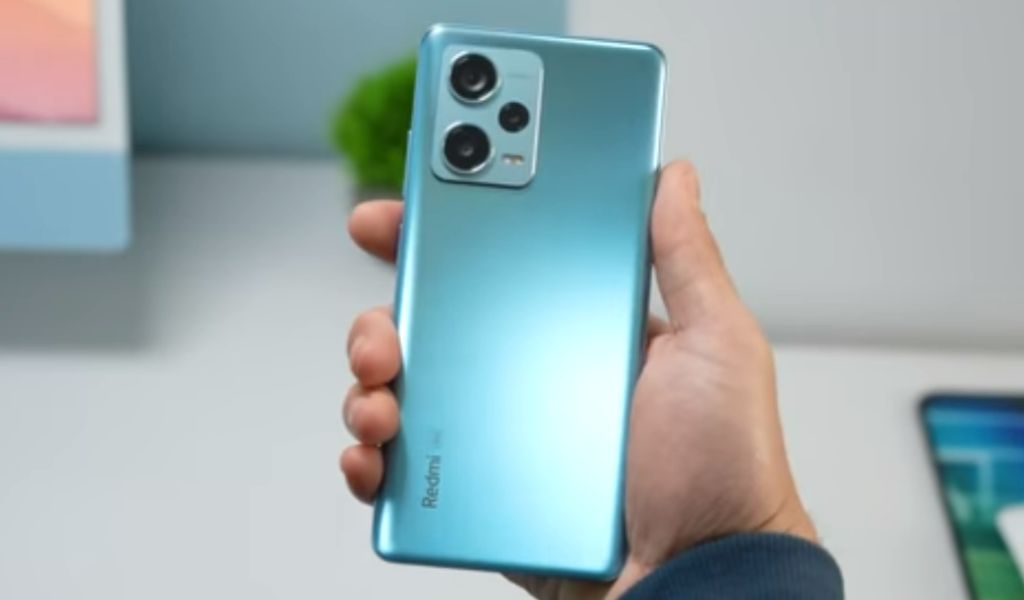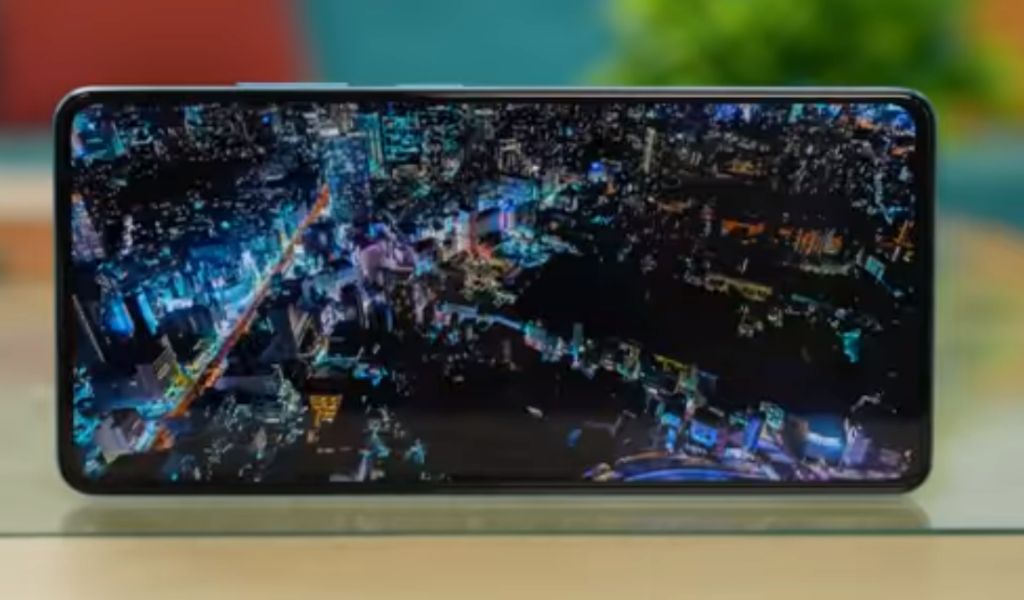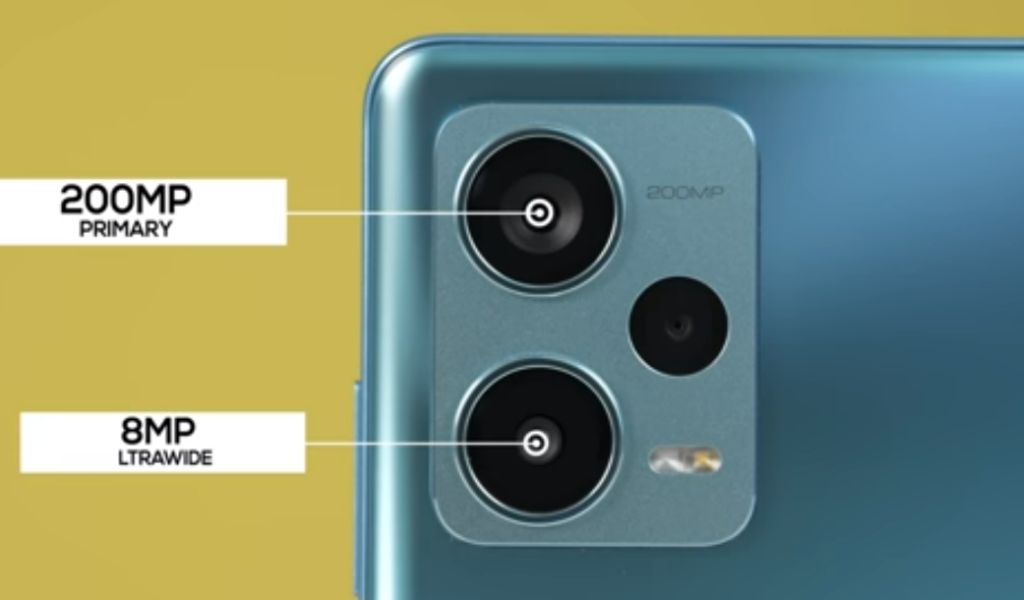Even if a Redmi Note device is never going to be the perfect phone, a straightforward analysis of how it stacks up against its rivals places it at the top of its class. Redmi Note phones have, over the course of their existence, demonstrated what the majority of people who purchase cheap smartphones are really looking for and how Xiaomi is able to meet their needs in an optimal manner.
Read More: OnePlus 11 Review
Realme, Samsung, Motorola, and Oppo have all made several attempts to unseat the Redmi Note from its position as the leader in terms of specifications and price, but to no avail. However, in 2023, Redmi will release the Redmi Note 12 Pro Plus, which would change this.
The Redmi Note 12 Pro Plus is being referred to by Xiaomi as the Super Note. The spec sheet and the inflated price tag both hint that there are a lot of enhancements behind the hood, despite the fact that the claims are over the top. This smartphone is the first in its price range to provide a 200-megapixel camera sensor, and it does so without sacrificing any of the essentials. The chipset is of a strong intermediate caliber, there is a huge capacity battery, a solution for speedy charging, and the display is excellent. Sounds amazing, however, at the same price point, the competition is offering some really impressive phones.
Xiaomi Redmi Note 12 Pro Plus 5G Review and Full Phone Specifications
Design
The most recent variations of the Redmi Note have been exquisite in their design (the most memorable one being the Redmi Note 7 Pro). In 2023, though, even the most feature-packed Redmi Note seems overly standard. If you were to remove the Redmi label from this phone, you would notice that it is virtually indistinguishable from a number of recent models produced by Realme, Oppo, and Vivo. Even the color gradient is inadequate, and the majority of you would require a protective cover that looks decent if you want to make a fashion statement with your phone. That’s not very impressive for a phone that costs Rs. 30,000; have you taken a look at the Nothing Phone (1), the Google Pixel 6a, or the iQOO Neo 6?
Read Also: Samsung Galaxy A54 and A34
Despite the fact that the design is unremarkable, the build quality is decent. Redmi’s specialty is creating plastic frames that can accommodate glass panels on the front and rear of their smartphones. I am relieved to find that a screen protector has already been put in, as well as a plastic TPU case that will provide further protection in the event that the device is dropped by accident. Even more impressive is that Xiaomi includes a 120W charger in the package, which is a feature that is increasingly uncommon on low-cost smartphones.
Display
The Redmi Note 12 Pro Plus 5G really impresses when it comes to its display. You will receive a 6.7-inch Full High Definition Plus AMOLED display that has a panel that is 10 bits deep and a refresh rate of 120 Hz. This display is a wonderful option for those individuals who enjoy streaming videos to their smartphones, such as television episodes or movies. Everything will appear more colorful, brilliant, and punchy as a result. There is support for Dolby Vision, but in order to have the greatest possible experience, you will need a Netflix membership that is compatible. The 120Hz refresh rate ensures that everything remains fluid, and even when seen in direct sunlight, the display is legible. Unfortunately, there is no fingerprint sensor built into the display of this device.
Performance
The Redmi Note 12 Pro Plus offers a performance that is both consistent and dependable thanks to its brand-new MediaTek Dimensity 1080 chip. The Density 1080 is an upgraded version of the Dimensity 920 chip, and when installed in the Redmi Note 12 Pro Plus 5G, it delivers what it claims to be capable of doing. This is a quick phone that is able to handle the majority of chores with ease. It runs Xiaomi’s MIUI 13, which is based on Android 12. This phone is capable of handling a wide variety of tasks very capably; for example, I had no trouble using Instagram or playing a round of Call of Duty Mobile on it. Bear in mind that in order for those resource-intensive games to work well, you will need to use the maximum settings possible, which is a combination of high and medium slots.
Also Read: Things you should Never Search for on Google
As for MIUI 13, it is the same old tale – a massively customizable user interface that is littered with bloatware and a few pre-loaded third-party applications. This has been the case since MIUI first launched. The MIUI software that comes with Xiaomi devices is extremely pushy at getting users to enable the Mi Wallpaper Carousel and update or download apps from the GetApps store. You are able to disable the majority of these and still enjoy the silky smooth performance that this beautifully optimized Android skin has to offer. However, the existence of Android 12 is annoying, particularly for a phone that will cost Rs. 30000 and be released in 2023. The fact that Xiaomi guarantees two Android OS updates and four years’ worth of security patches bodes well for the company’s long-term support. On the other hand, we are all familiar with the glacial rate at which Xiaomi smartphones receive operating system updates. Therefore, proceed with caution if you value operating system updates.
This discomfort is mitigated by the Redmi Note 12 Pro Plus 5G’s dual speaker arrangement, which is characterized by high volume and full-bodied sound. You also get a 3.5mm headphone connector, which is a godsend for people who are faithful to using wired headphones.
The performance of connectivity is also quite high. When I tested the phone on Airtel’s 5G network, I was able to achieve download rates of between 400 and 500 Mbps in my location. These speeds are comparable to those that I achieve on an iPhone 14 Pro Max. Even with 4G, network coverage is strong, and I did not have any dropped calls.
Xiaomi Redmi Note 12 Pro Plus Specifications and Prices
| NETWORK | Technology | GSM / CDMA / HSPA / EVDO / LTE / 5G |
|---|
| LAUNCH | Announced | 2022, October 27 |
|---|---|---|
| Status | Available. Released 2022, November 01 |
| BODY | Dimensions | 162.9 x 76 x 8.9 mm (6.41 x 2.99 x 0.35 in) |
|---|---|---|
| Weight | 208.4 g (7.34 oz) | |
| Build | Glass front (Gorilla Glass 5), glass back | |
| SIM | Dual SIM (Nano-SIM, dual stand-by) | |
| IP53, dust and splash resistant |
| DISPLAY | Type | OLED, 1B colors, 120Hz, Dolby Vision, HDR10+, 500 nits (typ), 900 nits (HBM) |
|---|---|---|
| Size | 6.67 inches, 107.4 cm2 (~86.8% screen-to-body ratio) | |
| Resolution | 1080 x 2400 pixels, 20:9 ratio (~395 ppi density) | |
| Protection | Corning Gorilla Glass 5 |
| PLATFORM | OS | Android 12, MIUI 13 |
|---|---|---|
| Chipset | Mediatek MT6877V Dimensity 1080 (6 nm) | |
| CPU | Octa-core (2×2.6 GHz Cortex-A78 & 6×2.0 GHz Cortex-A55) | |
| GPU | Mali-G68 MC4 |
| MEMORY | Card slot | No |
|---|---|---|
| Internal | 256GB 8GB RAM, 256GB 12GB RAM | |
| UFS 2.2 |
| MAIN CAMERA | Triple | 200 MP, f/1.7, 24mm (wide), 1/1.4″, 0.56µm, PDAF, OIS 8 MP, f/2.2, 120˚ (ultrawide), 1/4″, 1.12µm 2 MP, f/2.4, (macro) |
|---|---|---|
| Features | Dual-LED dual-tone flash, HDR, panorama | |
| Video | 4K@30fps, 1080p@30/60/120fps, 720p@960fps |
| SELFIE CAMERA | Single | 16 MP, f/2.5, (wide), 1/3.06″, 1.0µm |
|---|---|---|
| Features | HDR | |
| Video | 1080p@30/60fps |
| SOUND | Loudspeaker | Yes, with stereo speakers |
|---|---|---|
| 3.5mm jack | Yes | |
| 24-bit/192kHz audio |
| COMMS | WLAN | Wi-Fi 802.11 a/b/g/n/ac/6, dual-band, Wi-Fi Direct |
|---|---|---|
| Bluetooth | 5.2, A2DP, LE | |
| Positioning | GPS (L1), GLONASS (G1), BDS (B1I+B1c), GALILEO (E1), QZSS (L1) | |
| NFC | Yes | |
| Infrared port | Yes | |
| Radio | Unspecified | |
| USB | USB Type-C 2.0, OTG |
| FEATURES | Sensors | Fingerprint (side-mounted), accelerometer, proximity, gyro, compass |
|---|
| BATTERY | Type | Li-Po 5000 mAh, non-removable |
|---|---|---|
| Charging | 120W wired, PD3.0, 100% in 19 min (advertised) |
| MISC | Colors | Arctic White, Iceberg Blue, Obsidian Black, Trend edition |
|---|---|---|
| Models | 22101316UCP | |
| Price | $ 339.00 / £ 483.18 |
Information Source: gsmarena.com
Cameras
Xiaomi takes great care to fine-tune its cameras to produce photographs with vivid colors and well-lit nighttime scenes, all while maintaining accurate exposures. The Redmi Note 12 Pro Plus 5G carries on in the same vein as its predecessor. It is typical that just the primary camera can be used, and the fact that it has been upgraded to a 200-megapixel sensor causes some people to raise an eyebrow. You have the option of using the full 200MP mode to take a photo with a resolution of 200MP, which, when taken in good lighting, captures an incredible amount of information.
Know More: Best Smartphones 2023
The images, unfortunately, do not have a dynamic range and are largely washed out, particularly in environments with low and difficult lighting. In dim lighting, human forms take on the appearance of oil paintings, and the portrait mode offers an opportunity for development. Optical image stabilization (OIS) works to reduce blur in still photographs and also comes in helpful when filming videos. Exposures to bright light are another area of worry. The 8-megapixel ultrawide camera has, at most, mediocre color reproduction, and the 2-megapixel macro camera is a complete and utter waste of space. In contrast to the Google Pixel 6a, the Redmi Note 12 Pro Plus has a tendency to overexpose the highlights, which results in a loss of authenticity.
The 16-megapixel front-facing camera is above average for a device in this price range, producing selfies that are well-lit and excessively sharpened. On the other hand, the phone has a tendency to overexpose highlights and minimize shadows in favor of more natural-looking skin tones.
Battery
The Redmi Note 12 Pro Plus 5G is equipped with a battery that has a capacity of 4980 mAh, which makes it capable of lasting through the entire day. Bear in mind that the phone has trouble lasting an entire day with simply 4G enabled and a 120Hz refresh rate activated. Those who desire a speedy top-off will rejoice to know that the 120W wired charging option is available. Although the notion that a battery can go from 0 to 100 percent in 19 minutes is widespread, I was able to complete a full top-up in less than 30 minutes (with the Boost Charging enabled). The most exciting part of the game is when you suddenly need a boost from approximately 30 percent to 80 percent, which takes approximately 11–12 minutes. Even more fantastic is the fact that the quick charger is included in the package.
Conclusion
Despite Xiaomi’s best efforts to persuade everyone that the price increase is due to inflation and a number of other reasons, the Redmi Note 12 Pro Plus 5G is an expensive piece of hardware when compared to other Redmi Note devices. In addition to this, a cursory examination of the other products in the market reveals that the Redmi Note 12 Pro Plus 5G is not an obvious choice; the Nothing Phone (1) has a great deal more to offer in terms of value. The Redmi Note 12 Pro Plus does not give a highly refined user experience that is encased in a stylish design that is also constructed very well.
To Know More: How to Clean Up Your Browser’s Cache?
This Redmi “Super Note” does have a few appealing qualities to recommend it. As long as the illumination is adequate, the camera with 200 megapixels performs very well as a replacement for a zoom camera. A further advantage is that it supports rapid charging at 120W, and one might say the same thing about its amazing display. The performance of the Dimensity 1080 chip on Airtel’s 5G NSA network has proved satisfactory, and it is sufficient for the needs of the majority of consumers.
Having said that, considering that the Redmi Note 12 Pro Plus has a starting price of Rs. 29999, it is difficult to suggest. Either wait for the firm to lower the costs or go with the Nothing Phone (1), which is still our top selection for purchases made for less than Rs. 30,000. If you seek a high-quality experience when taking still photographs, another option to consider is the Google Pixel 6a. Those who place a high emphasis on good performance will find that the iQOO Neo 6 is another excellent purchase.



